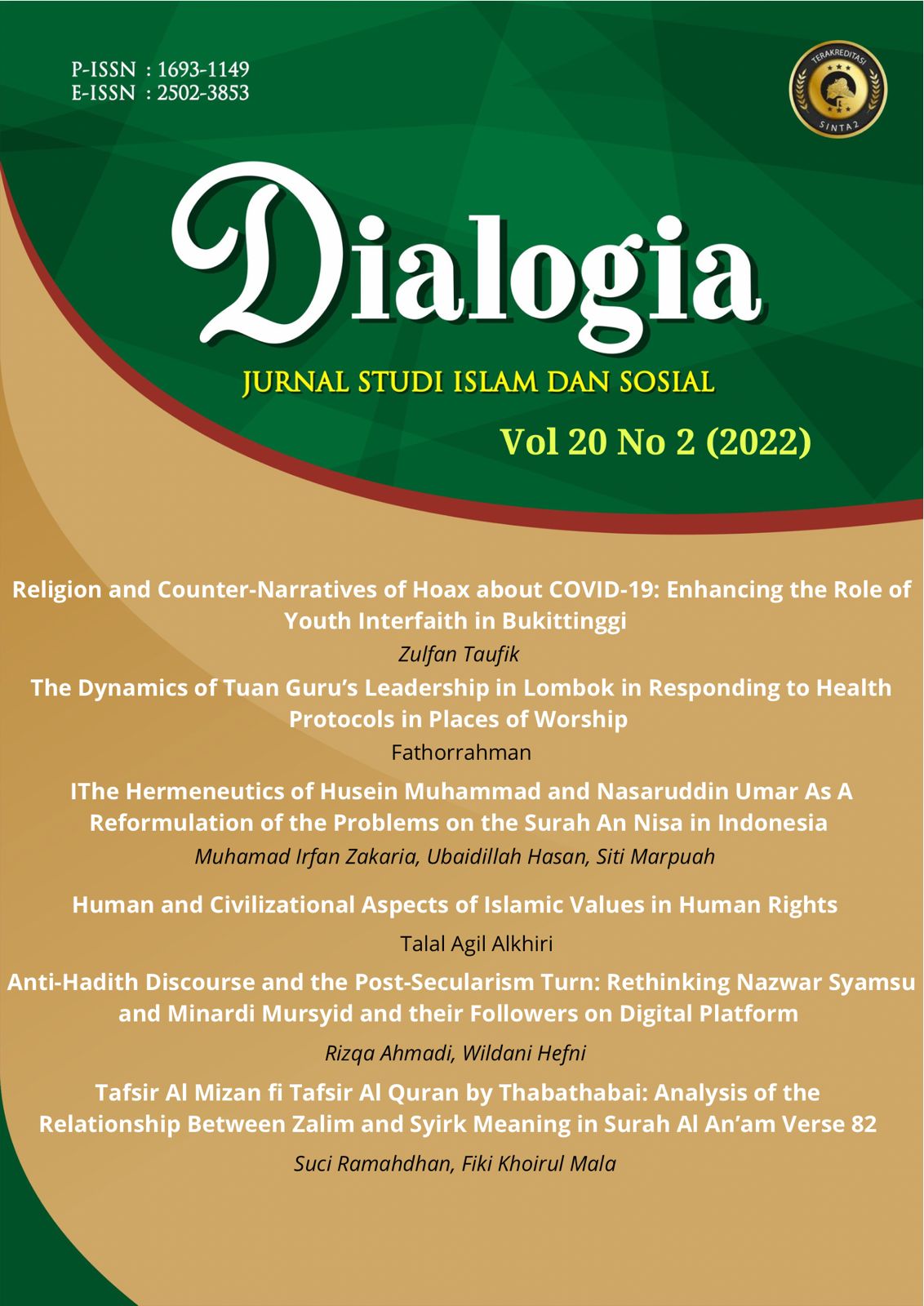Tafsir Al-Mizan fi Tafsir Al-Qur’an by Thabathabai: Analysis of The Relationship Between Zalim and Syirk Meaning in Surah Al-An'am Verse 82
DOI:
https://doi.org/10.21154/dialogia.v20i2.3909Keywords:
Credibility, Thought, Thabathabai, Shia, al-Mizan BookAbstract
The understanding of the Shia groups majority is considered too literal as the ideology that the caliph after the Prophet Muhammad is ”˜Ali ibn Abi Talib, which has an indirect impact on the rejection of his controversial exegesis, including al-Mi>za>n fi> Tafsi>r al-Qur’a>n written by Thabathabai. Thabathabai's credibility in al-Mizan is still often doubted for its validity to be used as a reference for the Qur'an reviewers because it includes a lot of Shia ideology, eventhough Quraish Shihab used it as a reference in his exegesis. This study aims to analyze the contextual form of Thabathabai’s exegesis in al-Mi>za>n fi> Tafsi>r al-Qur’a>n. This research is qualitative research with a normative-linguistic approach. The data used is the book of al-Mi>za>n fi> Tafsi>r al-Qur’a>n in the letter al-An'am verse 82, which discusses related to understanding the word za>lim which is interpreted as syirk, and is supported by scientific articles and books. Collecting data using documentation techniques, then the data were analyzed using descriptive qualitative analysis. This study proves that the contextualization efforts carried out by Thabathabai used linguistic analysis and also a comparative study between the Companions and Ulama after the Companions period, so the assumption that the Shia group is considered a literal and textual group needs to be re-examined.







